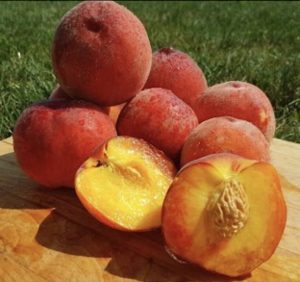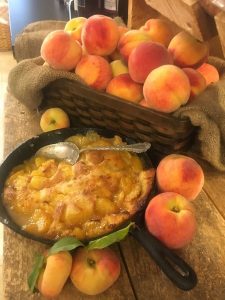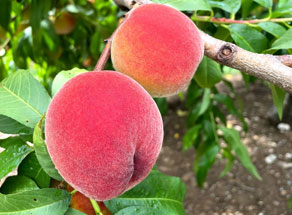 The peach tree is a deciduous fruit tree native to China and thought to have been transported to the West by the Persians, lending some speculation as to why some call peaches the Persian apple. Some historians believe that in ancient times, peaches were a symbol of longevity and luck and are still today considered to be one of the three blessed fruits in Buddhists culture.
The peach tree is a deciduous fruit tree native to China and thought to have been transported to the West by the Persians, lending some speculation as to why some call peaches the Persian apple. Some historians believe that in ancient times, peaches were a symbol of longevity and luck and are still today considered to be one of the three blessed fruits in Buddhists culture.
Peaches are categorized into two main types; clingstone and freestone. As you may tell from the name, clingstone peaches’ flesh clings to the pit making it harder to separate the flesh from the pit. Freestone is the exact opposite whereas the flesh can easily be removed from the pit.
peaches’ flesh clings to the pit making it harder to separate the flesh from the pit. Freestone is the exact opposite whereas the flesh can easily be removed from the pit.
Peaches are considered by some, to be one of the top three most popular fruits due to their sweet taste, juicy texture and ease of eating. Health experts say that peaches contain vitamins A, C, B1, B2, B6, and minerals such as potassium, phosphorus, magnesium, calcium, sulfur, chlorine, manganese, copper and iron. Some nutritionists say that eating peaches is a healthy way to keep your vision healthy as well as your nervous system, bones, teeth and skin.
Peaches are in season on our farm in Northwest N.J. from approximately mid-July through August. We farm approximately 35 acres of peaches on our farm, growing three different kinds namely; yellow, white and donut. Our farm production team plants early varieties as well as the late varieties of peaches to ensure a long bearing fruit crop for consumption. It is said that there are approximately 300 different varieties of peach trees used in the U.S. alone and that number is growing as newer varieties are always being developed. You may find our peaches now in our farm store, farm stands, as well as in our participating farmers markets. You may also wish to experience picking your own peaches on our scenic farm.
Peach trees require lots of labor; they require pruning in spring or fall, may require irrigation and also need manual thinning of fruit in June. We also have to paint the bottom trunk of peaches white to reflect light which prevents trunks from splitting when heating up in the sun. The lifespan of a peach tree typically ranges from 12-15 years. We have some trees on our property that are close to 20 years old and nearing their life cycle. These trees will be replaced by newer trees that will take approximately three years before they will begin to bear fruit. Planting several more peach trees on our farm is an annual maintenance item to ensure a continued crop.
Peaches are a delightful way to get more fruits into your diet when in season. They can be eaten raw, added to smoothies, grilled and added to most summer recipes. Add sliced peaches to your greens for a light tasting summer salad, or incorporate them into oatmeal or cold cereal for breakfast. Try making fresh peach salsa or muddling peaches into drinks. We love this family recipe that has been handed down for generations, Grammy Tyson’s Skillet Peach Pudding. Get the recipe here.
them into oatmeal or cold cereal for breakfast. Try making fresh peach salsa or muddling peaches into drinks. We love this family recipe that has been handed down for generations, Grammy Tyson’s Skillet Peach Pudding. Get the recipe here.
How can you tell if a peach is ripe for picking? Our Farm Steward Sam prepared a quick video for you to watch. Look for peaches where the bottom of the peach, the ridge, is fully rounded out and the peach has a brown stem.
Best wishes from our farm kitchen to yours!







